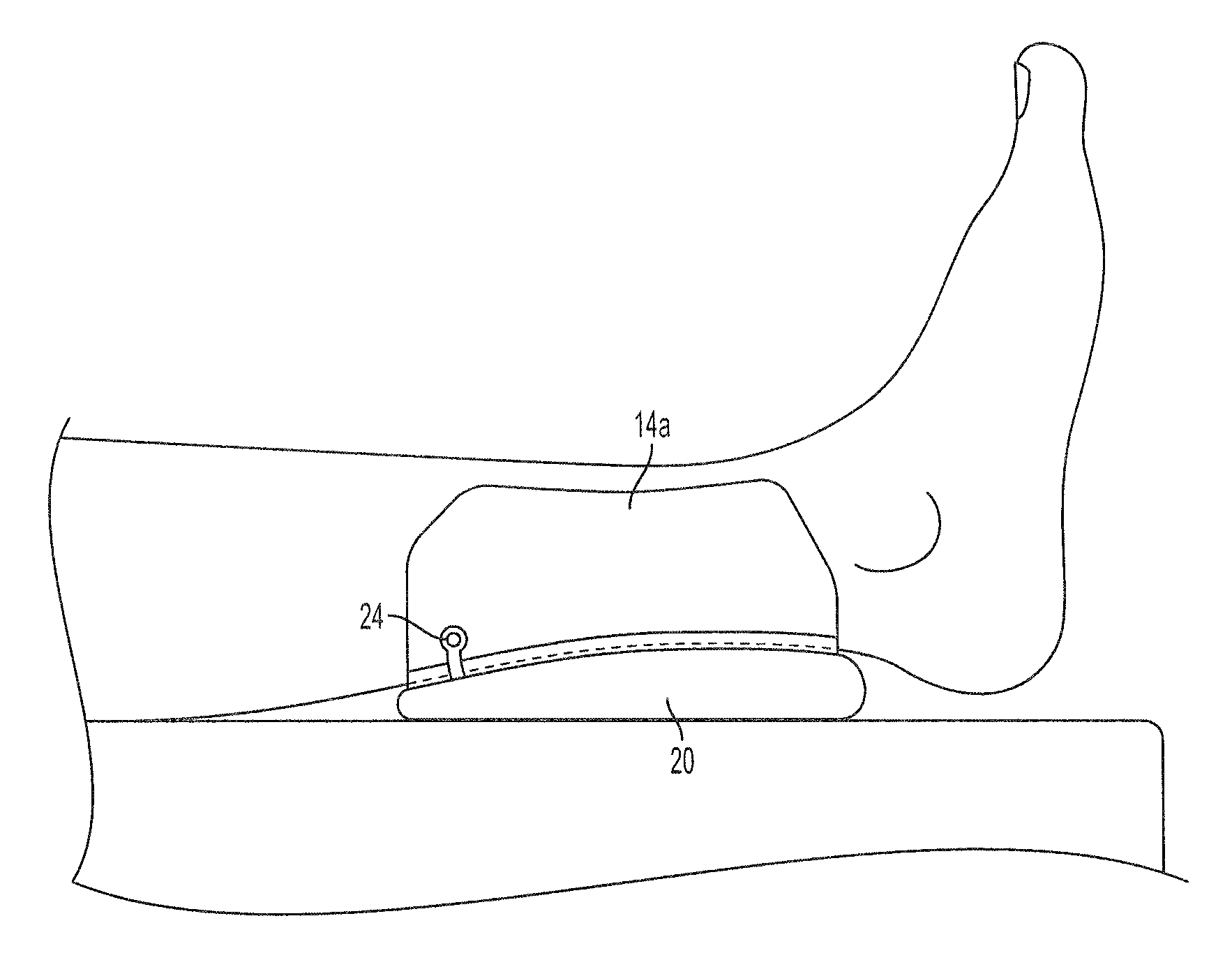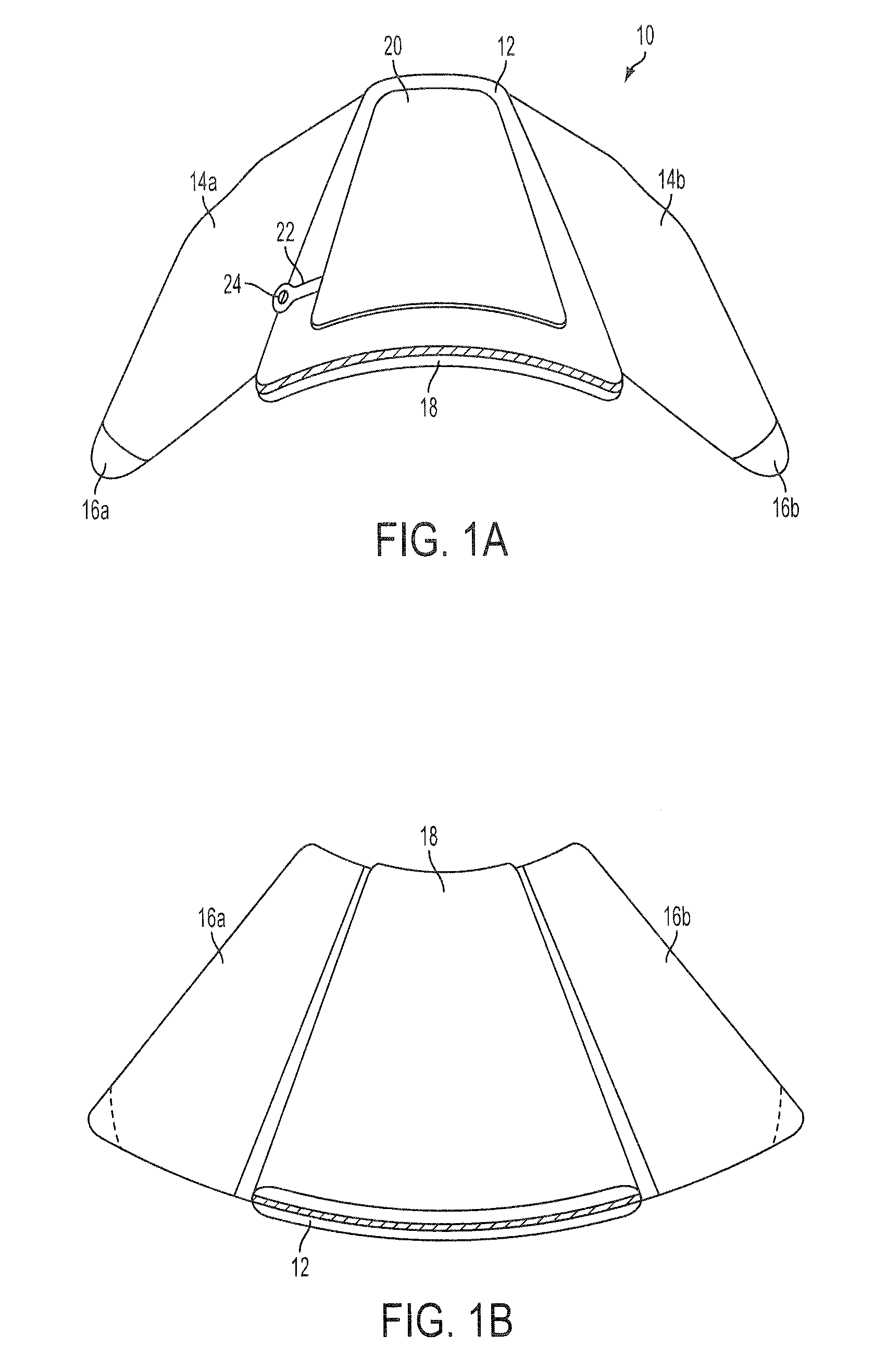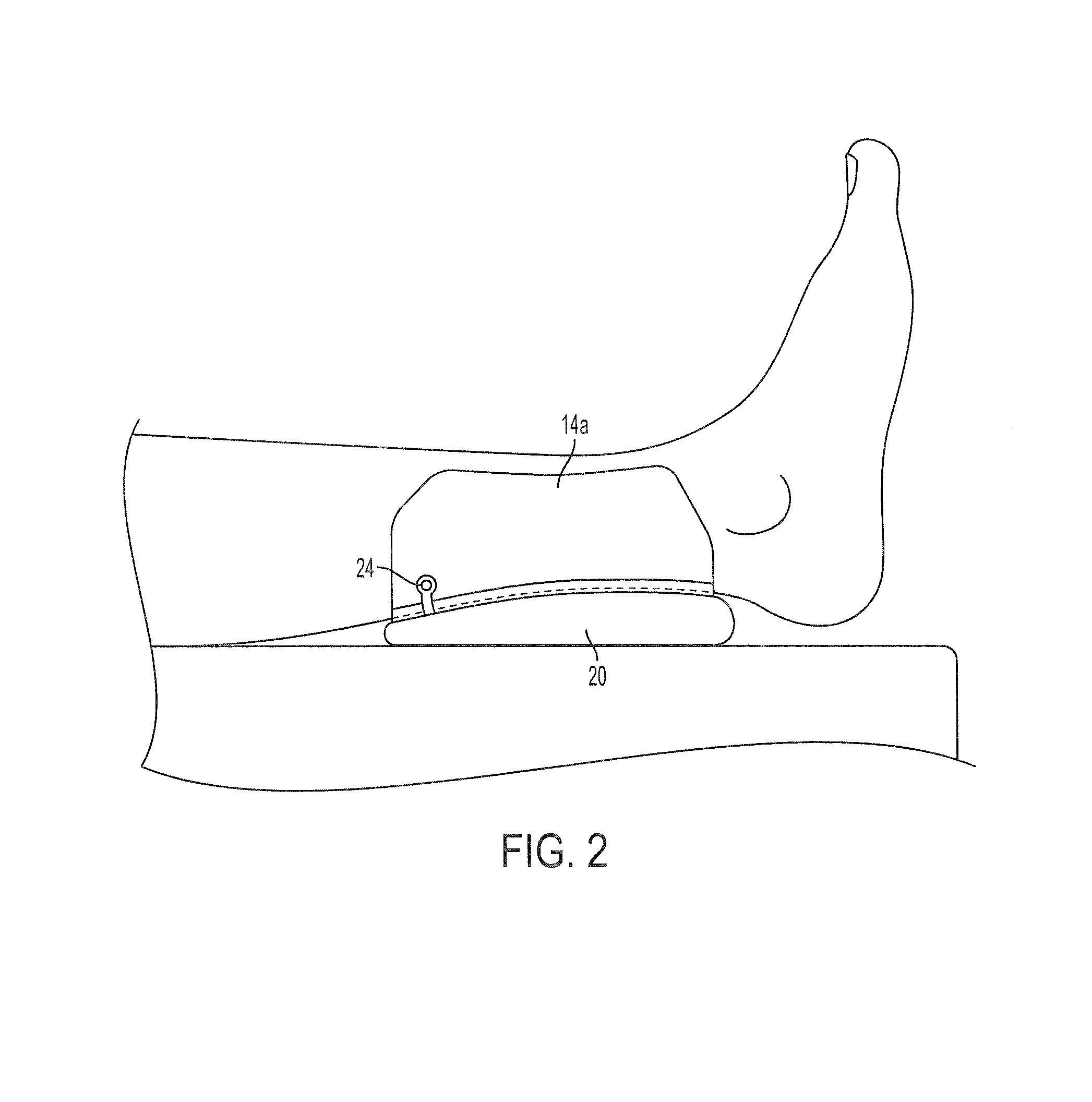Reconfigurable heel elevator
a technology of elevators and heel, applied in the field of reconfigurable elevators, can solve the problems of ulcers, prone to ulcers, osteomyelitis and even limb amputation, etc., and achieve the effect of reducing or mitigating the pressure on the individual's heel
- Summary
- Abstract
- Description
- Claims
- Application Information
AI Technical Summary
Benefits of technology
Problems solved by technology
Method used
Image
Examples
Embodiment Construction
[0030]As will be understood and more fully appreciated from the ensuing description, embodiments of the present invention are configured for attachment to the lower leg to provide for reducing or eliminating pressure on the heel region of the foot when the leg or foot is positioned such that the heel is in contact with an underlying surface (e.g., a bed) or would be in contact with an underlying surface but for the presence of the device. That is, as will be further understood below, while embodiments of the present invention may be implemented to sufficiently elevate the foot to provide for spatial separation of the heel from an underlying surface that the heel would otherwise rest upon, such and other embodiments of the present invention need not be used to provide such spatial separation of the heel, but rather may be advantageously used to reduce pressure on the heel even if the heel is in contact with an underlying surface. Additionally, even when the foot may be cantilevered o...
PUM
 Login to View More
Login to View More Abstract
Description
Claims
Application Information
 Login to View More
Login to View More - R&D
- Intellectual Property
- Life Sciences
- Materials
- Tech Scout
- Unparalleled Data Quality
- Higher Quality Content
- 60% Fewer Hallucinations
Browse by: Latest US Patents, China's latest patents, Technical Efficacy Thesaurus, Application Domain, Technology Topic, Popular Technical Reports.
© 2025 PatSnap. All rights reserved.Legal|Privacy policy|Modern Slavery Act Transparency Statement|Sitemap|About US| Contact US: help@patsnap.com



